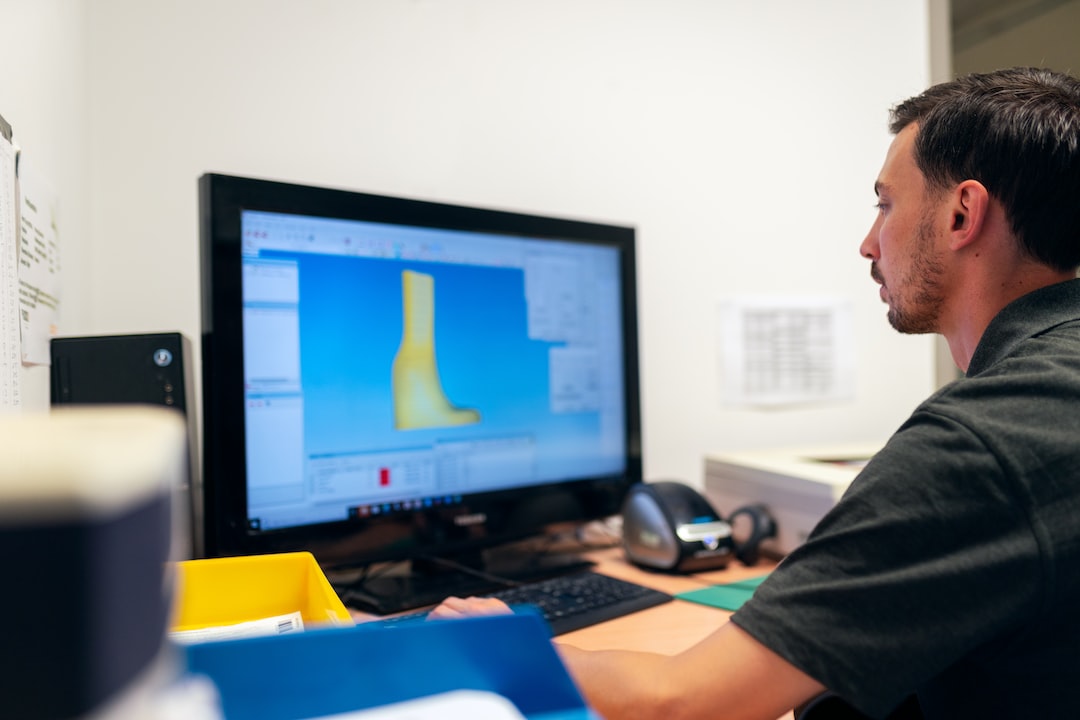10 incredible business forecasting tools to help you plan for success
10 incredible business forecasting tools to help you plan for success
1. Introduction
As a business owner, it’s critical to have a clear understanding of where your business is today and where it will be in the future. This requires forecasting. Business forecasting is the process of estimating future demand for your products or services.
A well-crafted forecast will help you make informed decisions about how to allocate your resources. It will also give you a roadmap to follow as you execute your business plan.
There are a number of different business forecasting tools available to help you plan for success. In this article, we will introduce you to 10 of the most incredible business forecasting tools.
https://unsplash.com/@clarke_designs_photography
2. What is a business forecast?
A business forecast is an educated guess about a company's future business performance. It is usually based on data and other information available at the time. Business forecasts help companies make decisions on resource allocation, investments, hiring, and more. For instance, a business might decide to hire more staff if their forecast shows an increase in revenue, or invest in new technology if their forecasts indicate strong customer demand for their services.
Firms may base their forecasts on current trends, market research, financial data, and data on competitor performance. They may also use a combination of qualitative and quantitative methods. Qualitative methods may include interviews, surveys, and polls. Quantitative methods could involve statistical modeling, machine learning algorithms, and predictive analytics.
Business forecasts enable managers to plan for the future and anticipate potential risks and opportunities. Forecasts also enable firms to make sure they are prepared for the upcoming changes in the market and the economy. By using reliable forecasting tools, businesses are able to make decisions quickly and confidently to maximize their chances of success.
https://unsplash.com/@thisisengineering
3. Why is forecasting important for businesses?
Forecasting is a key factor in the success of any business. A good business forecast allows you to plan for the future and anticipate potential opportunities and risks. It enables you to make better decisions about your resources, investments, and staffing needs. With a reliable forecast, companies can make well-informed decisions about how to move forward, leading to better long-term success.
A good forecast gives businesses the knowledge they need to stay competitive. It also allows them to react to changes in the market quickly and take advantage of opportunities. Furthermore, through accurate forecasting, businesses can develop accurate financial goals and resources to support them. An accurate forecast also ensures that the organization has enough cash flow to fund investments and sustain operations.
In summary, business forecasting is important because it gives businesses the ability to plan for the future and stay competitive. With the right tools and techniques, businesses can make decisions confidently and maximize their chances of success.
https://unsplash.com/@thisisengineering
4. What are some common forecasting tools?
Business forecasting tools can come in many shapes and sizes, but some common tools include:
1. Time-series forecasting - This is a statistical tool which uses past data to forecast sales or other performance metrics. Time-series forecasting typically looks at a time period of 1-3 years and uses a variety of techniques to analyze data.
2. Monte Carlo forecasting - This type of forecasting uses Monte Carlo simulations to help businesses better understand the impact of uncertainty and risk. It also can help businesses make decisions about resources and investments.
3.Trend analysis - This tool uses historical performance data and estimates future performance using linear regression. It plots historical data, compares forecast to actual results, and helps businesses analyze trends to inform future decision making.
4. Cross-sectional models - These models take the average of a large number of data points to make predictions. They are useful for predicting the future of a single entity, and can be used in combination with other forecasting tools.
5. Scenario planning - This tool is an analytical technique which identifies different plausible scenarios and helps businesses plan accordingly. Scenario planning typically involves using quantitative data combined with qualitative inputs to make decisions.
By using the right type of forecasting tools, businesses can make data-driven decisions and plan for their future success.
https://unsplash.com/@thisisengineering
5. How can you choose the right forecasting tool for your business?
Choosing the right forecasting tool can be a difficult process, so it's best to start by asking yourself a few questions.
1. What data points are you trying to forecast? Depending on what you're trying to predict, your choice of forecasting tool may vary.
2. What type of data input do you have available? Time-series forecasting, Monte Carlo simulation, and trend analysis require a certain type of data input to be effective, so it's important to understand what type of data you have.
3. How biased are your predictions? If your same data is used for both training and testing, then you'll need to use methods such as cross-sectional models or scenario planning to ensure your predictions remain unbiased.
4. How much uncertainty is there in your data? If your data has high levels of uncertainty, you may be better off using Monte Carlo simulations to forecast, as this will account for the variability.
5. How accurate do your predictions need to be? If you need highly accurate predictions, then you may be better off using a combination of different forecasting algorithms.
By considering these questions, you can determine which forecasting tool is the right fit for your business.
https://unsplash.com/@thisisengineering
6. Top 10 Business Forecasting Tools
Now that you have a better understanding of the types of forecasting tools available and what to look for when selecting the right one, here are the top 10 business forecasting tools to consider for your business.
1. Gartner Forecasting Tool: A multi-step, statistical tool used for projecting future trends.
2. Machine Learning Algorithms: Complex algorithms capable of finding patterns and insights in large datasets.
3. Time Series Forecasting: A statistical method of forecasting future values based on patterns in past data.
4. Monte Carlo Simulations: A powerful method of statistical modelling used to calculate risk or uncertainty.
5. Neural Networks: A powerful deep learning technique used to create predictions based on large datasets.
6. Spreadsheet Models: Simple, Excel-based forecasting models that help identify underlying trends in data.
7. Linear Regression: A method of predicting outcomes by estimating how two or more variables interact.
8. Sales Forecasting Software: An automated solution for predicting future sales performance.
9. Predictive Analytics: A form of artificial intelligence used to make predictions about future outcomes.
10. Econometric Models: A set of algorithms and mathematical models used to evaluate the behaviour of different variables.
Each of these business forecasting tools comes with its own strengths and weaknesses, but using them together can have a major impact on the decisions you make for your
https://unsplash.com/@thisisengineering
7. How to Use Forecasting Tools to Achieve Business Success
Once you have identified the best forecasting tools for your business needs, it’s time to put them into action. Here are seven steps for using forecasting tools to achieve business success.
1. Set Your Goals: The first step should be to set clear goals for what you’re hoping to achieve with forecasting in your business.
2. Gather Data: The next step is to collect a comprehensive set of data that is relevant to your goals. This data should include historical insights, customer information and other relevant details.
3. Analyse the Data: Once your data is collected, analyse it to identify patterns that can inform your forecasting efforts. This could include determining customer purchasing habits or spotting seasonal trends.
4. Establish Benchmarks: To ensure accurate forecasting, you should also set baseline metrics and parameters to measure results against.
5. Select Your Tool: Once you have a good understanding of the data, you’ll be in a better position to select the right forecasting tool for your needs.
6. Input Your Data: Once you have selected the forecasting tool, you’ll need to input the data you collected into the relevant fields.
7. Execute Reports: Finally, execute reports and analyse the results to gain valuable insights about what lies ahead for your business. This data can then be used to inform your decision-making.
https://unsplash.com/@thisisengineering
8. Conclusion
Business forecasting tools can be effective tools to help you plan for success. They enable you to analyse data and gain valuable insights about the future of your business. Once you have identified the best forecasting tools for your business needs, it’s time to follow the seven steps outlined above. This includes setting clear goals, gathering data, analysing the data, setting baseline metrics, selecting the tool, inputting your data, and executing reports.
By following these steps, you can use business forecasting tools to optimise your decision-making and ultimately achieve lasting business success. With the right tools and processes in place, you can to make confident business decisions and continue towards your desired goals.
For any question, please contact us in OpenTimeClock.com. https://www.opentimeclock.com.
Created with the Personal Edition of HelpNDoc: Free Web Help generator






